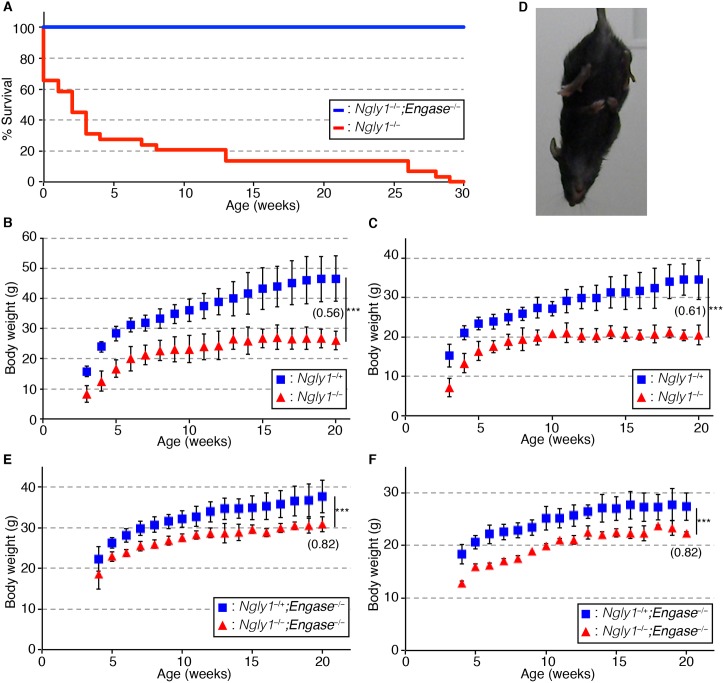Fig 4. Engase-deletion improves the % survival and partially rescues the body weight loss of viable Ngly1−/− mice.
(A) Survival curve for Ngly1−/−;Engase−/− mice (n = 9) and Ngly1−/− mice (n = 29) in the C57BL/6 and ICR mixed background. (B, C) Change of body weight of Ngly1−/+ mice and Ngly1−/− mice in C57BL/6 and ICR mixed background. (B) shows the results of male mice (Ngly1−/+:n = 3~4, Ngly1−/−:n = 2~5) and (C) shows the results of female mice (Ngly1−/+:n = 5~11, Ngly1−/−:n = 2~5). (D) Hind-limb clasping of 4 weeks-old Ngly1−/− mice in the C57BL/6 and ICR mixed background. (E, F) Change in body weight of Ngly1−/+;Engase−/− mice and Ngly1−/−;Engase−/− mice in the C57BL/6 and ICR mixed background. (E) shows the results of male mice (Ngly1−/+;Engase−/−:n = 4~8, Ngly1−/−;Engase−/−:n = 2~4) and (F) shows the results of female mice (Ngly1−/+;Engase−/−:n = 7~11, Ngly1−/−;Engase−/−:n = 2~3). For statistical analysis, Student’s t-test was used. ***:p<0.001. The number in panel B, C, E, and F indicates the relative ratio of weight of Ngly1−/− mice to Ngly1−/+ mice at 20 weeks of age.

